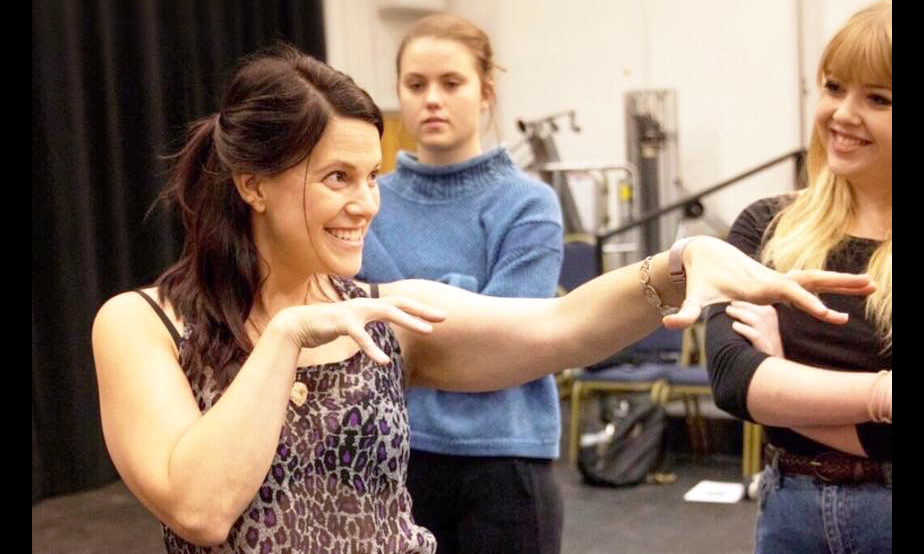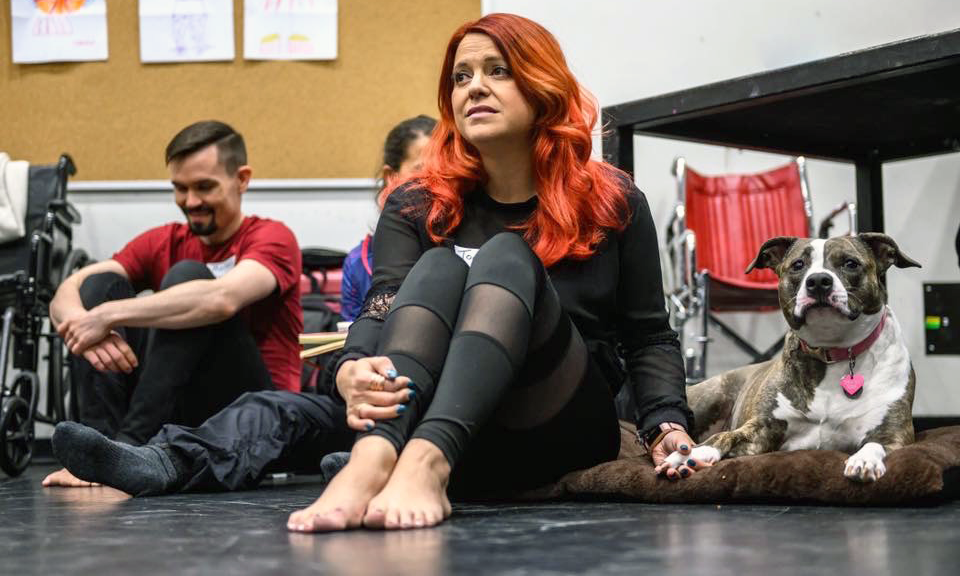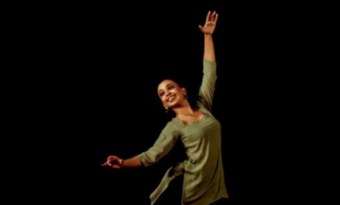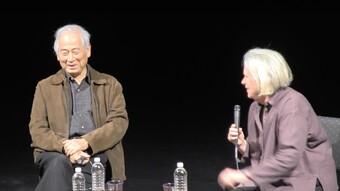At first, the idea that artists needed technique to deal with intimacy did not catch on. But then the Chicago Reader broke a story on the history of abuse at Profiles Theatre, waking up artistic leaders who had been oblivious to the pervasiveness of such behavior; a self-confessed sexual harasser was elected president of the United States; and the #MeToo movement began. Suddenly, the women with the skills to handle intimacy ethically and creatively were in high demand.
Sina, a Chicago-based choreographer, met Rodis, who is now intimacy coordinator at HBO, and Richardson, and together they founded Intimacy Directors International (IDI). Rikard, alongside Pace, an assistant professor of movement at the University of Maryland Baltimore County, created Theatrical Intimacy Education (TIE). Today, both institutions provide training and consultations, as well as set professional standards for the entertainment industry. IDI also offers certifications to intimacy choreographers who have successfully completed their program.
Make no mistake: intimacy direction, as these women conceive of it, is more than a sexual-harassment prevention program, and more than a way of helping young actors get comfortable with sex. It is an art and a craft of its own. According to IDI’s five pillars for rehearsal and performance practices, a central tenet of intimacy direction—like with stage combat—is that each moment “must be choreographed, and that choreography must be adhered to for the entire production.” As with any other form of choreography, intimacy choreography involves making specific choices about given circumstances, character, intention, and story. And when artists make choices that specific, the art is better.
Suddenly, the women with the skills to handle intimacy ethically and creatively were in high demand.
There’s a Technique for That
Prior to the invention of intimacy direction, theatre practitioners had very few tools for staging sex. They often relied on the actors’ real lives, making the assumption that the actors had some experience that would be applicable to the scene. According to Pace, whose book Staging Sex: Best Practices, Tools, and Techniques for Theatrical Intimacy, will be released this year:
In all other aspects of our process, directors and choreographers have a language to shape and change what they’re seeing in front of them. Instead of just saying ‘Be more passionate!’ we have language for staging intimacy.
Sarah Lozoff, IDI-certified choreographer and resident intimacy director at the Oregon Shakespeare Festival, agreed. “Imagine if we said ‘Just go for it!’ with dance or fight choreography. That would be terrible,” she says. Instead, intimacy choreographers look at who’s starting the action, who’s stopping it, and how long it goes. “A good fight advances the plot. I want that to be true for intimacy.”
Creating repeatable choreography for intimacy not only tells a better story, it also means the actors don’t have to rely on feeling it every time they do it. “On day one, maybe the actors have the hots for each other and the kiss is great,” says Pace, “but four weeks from then, when the show opens and they don’t really like each other any more, and one of them had a tuna sandwich for dinner, all of sudden they’re just relying on their feelings rather than being able to lean on technique.”
Good intimacy direction also means actors are enabled to leave the emotions explored in an intimate scene at work rather than take them home. “For the most part, people don’t hate each other the more they sword fight,” Sina shares. But when they’re kissing, “their bodies and their brains start to believe it’s psychologically real.” What they’re doing requires a different level of understanding, and they require closure and technique to get them out of that headspace at the end of the day. To that end, IDI encourages artists to practice closure with a small shared moment or ritual, signifying that they are leaving the fiction behind and moving back into real life.
Mental Health Matters
The consideration for the mental health of artists is something that distinguishes intimacy choreography from some other kinds of choreography. In fact, psychological considerations are baked into the practice, including that of consent. In consultation with a psychologist, Rikard learned that if people are in a state of vulnerability—which is basically a job requirement for actors—and they don’t have the power in the room, the neurological pathways that would lead to saying, “No, I’d like to have a conversation about that” turn off. To address this, TIE recommends the use of a safe word, such as “button” or another word that is unlikely to appear in the text of the play, so that an actor whose boundary has been crossed can call a stop to a scene.
In an industry where so many people have been harmed by harassment and abuse, holding space is no easy task.
Often, it is an intimacy choreographer’s job to hold space for actors, meaning to empathize without judgment. Samantha Ann Egle, certified combat teacher and IDI apprentice, shared how she must work to hold space for folks to be vulnerable. Sometimes the vulnerability comes from people learning something for the first time, under pressure to do well while maintaining safety. In other cases, “it stems from trepidation about being able to tell the particular story and perform the choreography with confidence.” Egle’s work involves opening the door for the actors’ vulnerability, supporting their individual processes, and equipping them with the tools needed to effectively tell the story in a safe and sustainable way.
In an industry where so many people have been harmed by harassment and abuse, holding space is no easy task. Often, it’s not just the actors who need empathy. Teniece Divya Johnson, an IDI-certified choreographer and intimacy coordinator, told me that some people are triggered by the mere presence of an intimacy coordinator, whether because of their own history of trauma or because society trains us not to talk honestly about sex and intimacy. “As a society, we’re really hurt. We need a lot of healing,” they say. “We haven’t been having honest communications with each other about relationships and physicality. And when this stuff comes into a workplace, it impacts everyone.”
Use Your Words
Another central tenet of intimacy direction is that the choreographer never steps in for an actor to demonstrate, which is unlike the process for stage combat and dance. “When I stage a punch, at no point does my fist ever come in contact with an actor’s face,” Pace says. “But when staging a kiss, faces are going on faces.” There’s not a technical difference between a stage kiss and a real kiss in the same way there is a difference between a stage punch and a real punch. “That’s why having a language and tools and technique to guide the actors is so important,” she continues. “It is very much a verbal process.”
For TIE, this verbal process involves using deliberately desexualized language. As an example, Rikard cites an experience working on Measure for Measure, in which the actor playing Angelo called “button” and expressed his difficulty embodying Angelo’s lust for Isabel. Rikard told him: “Imagine you’ve been on a no-carb diet for over a year and she’s holding a tub of ice cream.” And the actor had an amazing breakthrough. “He became lecherous, he became all the things the character had to be,” she explains, “and he didn’t have to imagine at all that he wanted to take her body physically. It just looked that way.”
Even though the practice of intimacy choreography involves allowing the actors to state their boundaries—for example: “you cannot grab my right wrist because I recently had surgery on it”—every choreographer I talked to agreed that this places no limits on what stories can be told. The intimacy chorographer’s job is to support the director’s vision, and that involves giving intimacy the same level of attention as the other moments in the piece. Pace tells directors, “Tell me what you want, out of earshot, and then I can make that story happen for you working within the boundaries of the actor.” There’s no boundary an actor has that’s going to get in the way of telling the story the director is trying to tell.
The intimacy choreographer’s job is to support the director’s vision, and that involves giving intimacy the same level of attention as the other moments in the piece.
Beyond Social Constraints
Sometimes, being an intimacy choreographer involves more than just creating choreography. It can also involve helping actors understand what healthy intimacy is altogether.
Sina, who was teaching in Oklahoma at the time she started developing her technique, has found that younger actors have a very different relationship to touch than what used to be the norm in theatre culture. “This new generation is being brought up with more consent than we ever were taught,” she says. “It’s created a more honest environment, and one that doesn’t just reward people with no boundaries.”
Sina also notes that young people today often have trouble with onstage eye contact because they’re not used to it, given how they conduct much of their personal relationships over their phones. “You literally have to teach them how to look at each other,” she says. Her exercises have evolved from creating contrived intimacy and then walking away to learning how to be a human again who has to look in another person’s face.












Comments
The article is just the start of the conversation—we want to know what you think about this subject, too! HowlRound is a space for knowledge-sharing, and we welcome spirited, thoughtful, and on-topic dialogue. Find our full comments policy here
This article is an inspiring gift. Thanks for putting this out there for us all, Holly!
Hi Holly!
Thanks for a great article about our important process. Just a minor correction: I am also a co-founder of Theatrical Intimacy Education. I am also offering educational services through another company, Heartland Intimacy Design & Training.